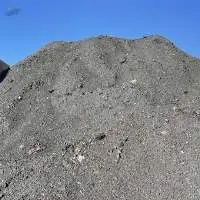
The Bullet 500 is the same as the iconic Bullet 350, but with a bigger 499cc engine. The Bullet 500 is powered by a single-cylinder air-cooled 499cc mill producing 26.5bhp of power at 5,100rpm and 40.9Nm of torque at 3,800rpm. Power is transmitted via a five-speed gearbox. The motorcycle has been fitted with a carburetor. The motorcycle features a 280mm disc brake with a two piston calliper in the front, and an electric start is standard. A rear disc brake and dual-channel ABS are on the options list. Opting for the rear disc brake adds Rs 5000 to the price of the base model, The Bullet 500 is available in green, grey or black.
Royal Enfield loves to tell a story, and this time, the story takes us back to 1948. Thats the year this brand got into the world of Trials racing, with the 350cc trials bike. And now, it has revived the same concept in India, through two bikes the Bullet Trials 350 and the Bullet Trials 500. Both bikes are meant to look retro, cool, rugged and have been launched to pay homage to Johnny Brittain a legendary trials rider from England. So, to make us experience the world of trials racing and also understand the Bullet 500 Trials, Royal Enfield developed a series of courses at 19 Degrees North at Lonavala. One glance at the Bullet 500 Trials, and youll see that its not the regular Royal Enfield. The combination of khakee green frame and the presence of single seat gives it out. Then theres also the luggage rack that brings out the ruggedness of the motorcycle, along with the utilitarian aspect. The large upswept exhaust might look hideous at first, but as times pass by, it gels well with the concept of a soft-roader.
Bar mops, dish cloth, duster cloth, floor cleaning cloth, stockinet rolls, face cloth, hand towels, bath towels, beach towels, kitchen towels, tea towels ( stripped, checked, printed, embroidered, jacquard ), waffle weave kitchen towels, glass cloth, herringbone kitchen towels, terry tea towels, mono check tea towels, aprons, pot holders, hot pad, oven mitts, silicon oven mitt, terry oven mitt, pan grabbers, chef hat, caps, socks ( cotton, polyester ), cotton rag rugs & mat, bed sheets, table cloth, napkins, cushion covers, thermal blankets, fleece blankets, mink blankets, floor carpet, cotton bags, tote bags, shopping bags, jute bags, paper / board bags, fruit picking bags, coin bags, cotton webbing tape, cotton/ polyester braided cards, home textiles & made ups, jute webbing, pp webbing, soft plant tie, coconut coir pith / peat..
We are proposing about 2000tons of iron slag derived from the desulphurisation skimming process. This material is a iron by- product that is encapsulated in varying levels of contaminants (S,Mg,Si). In order to enhance its usability, the material is processed and screened. We can propose two specifications of Iron Slag - European Code: 19.12.01 - Basel Code: B1010 - HS Code: 2619.0020 - Quantity: 2000 tons currently available - Monthly quantity: 500-1000 tons depending on production - Size: 350 1200 mm - Fe content: from 77 to 86% - C content: above 2,5-3% - Bulk density: 2,8-3,4 tons/m3 - Loading type: loose in 20 (26-27 tons on average) The level of Fe% in the slag has been estimated by water displacement test. For any further information please feel free to contact us
We are glad to propose 500 MT of stain less steel mill scale. Mill scale is formed on the outer surfaces during by the hot rolling lamination of stainless-steel products. At a visual inspection the material is a hard brittle sand and is mainly composed of iron oxides, mostly ferric, and is bluish black in colour, but it also contains considerable alloying elements such as chromium and nickel. The recovery ratio after melting in furnace for the most valuable alloy elements is: - Ni: 3.5 - 4.5% - Cr: 6-8% From the chemical and physical analysis performed on the scrap, and according to the European environmental rules, the material has been classified as a special non dangerous waste, listed in green list. In particular the mill scale can be classified as follows: Waste code: 10 02 10 The material is stored on cemented flooring, and it can be loaded loose in tipper trucks or containers. Chemical analysis of the material is available on request.

